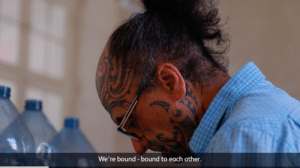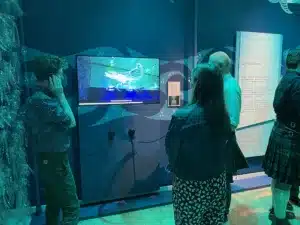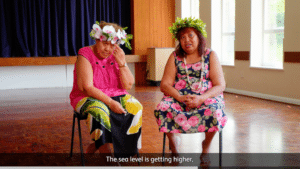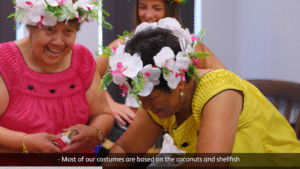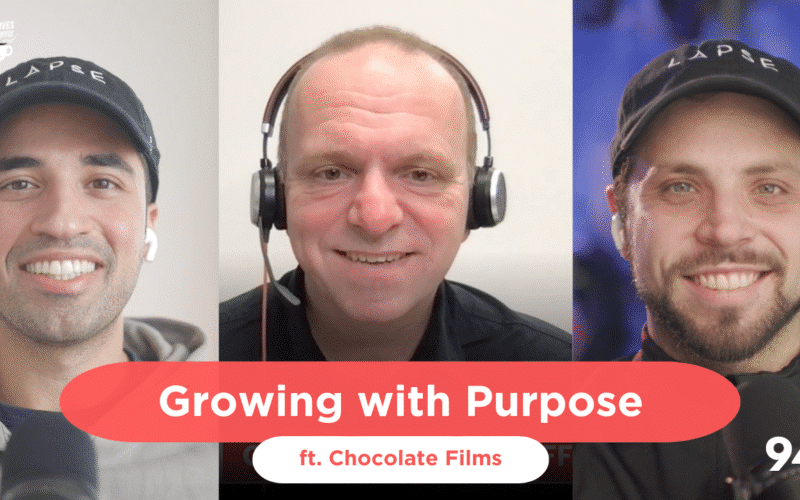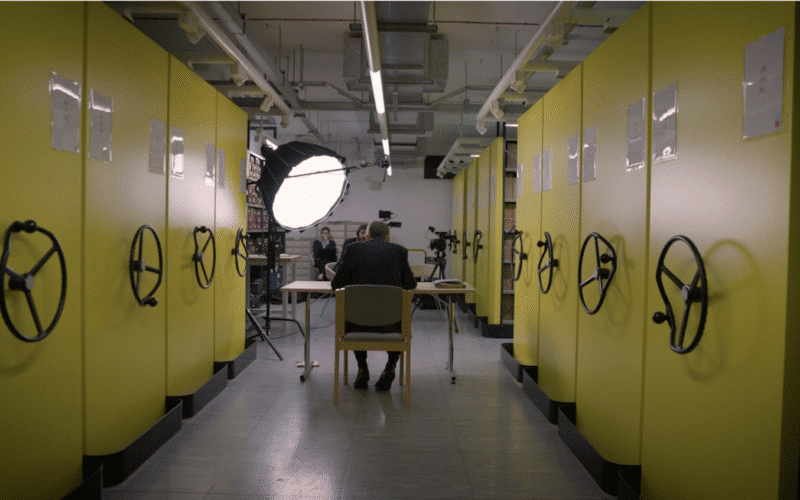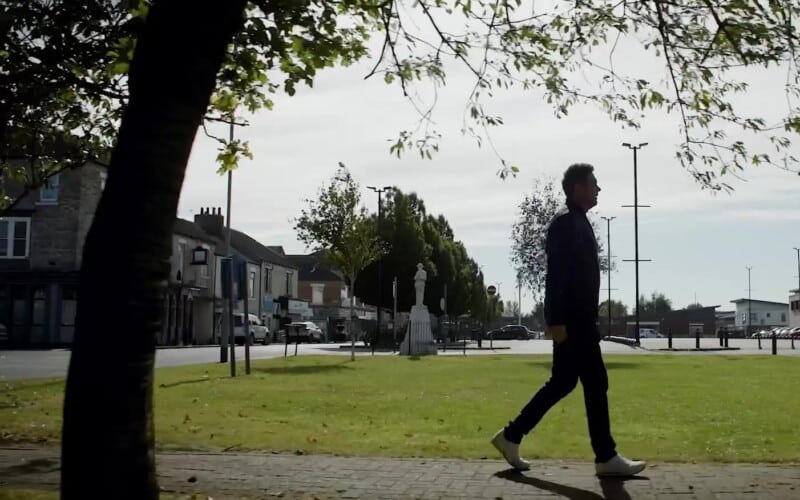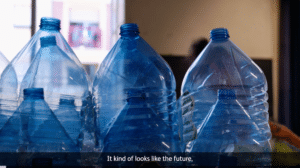
What will our oceans look like in 100 years?
A central element of the exhibition is an installation by Māori artist George Nuku, Bottled Ocean 2123, which imagines the state of the oceans 100 years into the future in an immersive, undersea landscape crafted from single use plastic bottles.
One of the films we were commissioned to make was a film about his approach to the work, and we imagined it as a thoughtful and meditative visual poem, combining rich visuals with a reflective voiceover. We wanted it to be a conceptual artistic collage that touched upon big themes and ideas relating to the ocean and climate change, but through a different lens. People have become accustomed to hearing the same messages and seeing the same footage about climate change, but this film aimed to be a much more emotive and subjective piece.
For this reason we went for an approach that combines abstract visuals and an audio-only interview. This technique blurs the lines between documentary and naturalism, and allows the viewer to feel completely immersed in the contributor’s thoughts and subconscious. In addition this production technique can allow the interviewee to relax and open up during recording, producing a more candid and emotive response. It also helped that George has an incredibly warm and engaging voice, and can speak passionately about almost any topic!
Our filmmaker Vlad travelled to George’s home in Rouen, France, where he spent the day travelling around the city and visiting his studio.
The most vulnerable nation on earth
We were also commissioned to make a series of films about the role of song and dance in Kiribati, which is amongst the most vulnerable nations to climate change on Earth.
For the production The National Museum of Scotland introduced us to the Kiribati Tungaru Association, a UK-based Kiribati diaspora community group. We filmed members of their Dance troupe performing a traditional dance and interviewed several generations of the group to create a documentary about the role of dance in Kiribati culture, the importance of dance for the diaspora community and the effect that climate change is having on the island.
Capturing these films involved a trip for filmmakers from our London office, Vlad and Emma, down to the beautiful countryside of the New Forest. We were able to capture the dance on the banks of a river, juxtaposing the beautiful Micronesian dance with an idyllic pastoral English landscape.
The films are presented as a digital touch-screen interactive alongside a physical Display of a dance costume created from unusual materials.
Capturing these films involved a trip for filmmakers from our London office, Vlad and Emma, down to the beautiful countryside of the New Forest. We were able to capture the dance on the banks of a river, juxtaposing the beautiful Micronesian dance with an idyllic pastoral English landscape.
The films are presented as a digital touch-screen interactive alongside a physical Display of a dance costume created from unusual materials.
A Māori welcome
We were invited to the exhibition opening which was a very special evening. George and the volunteers welcomed us with a traditional dance and a very warm and powerful speech.
The group then led us up through the museum and into the gallery space to see all of the incredible displays and installations. The exhibition runs until April 2024 and we highly recommend seeing it while you have the chance!

